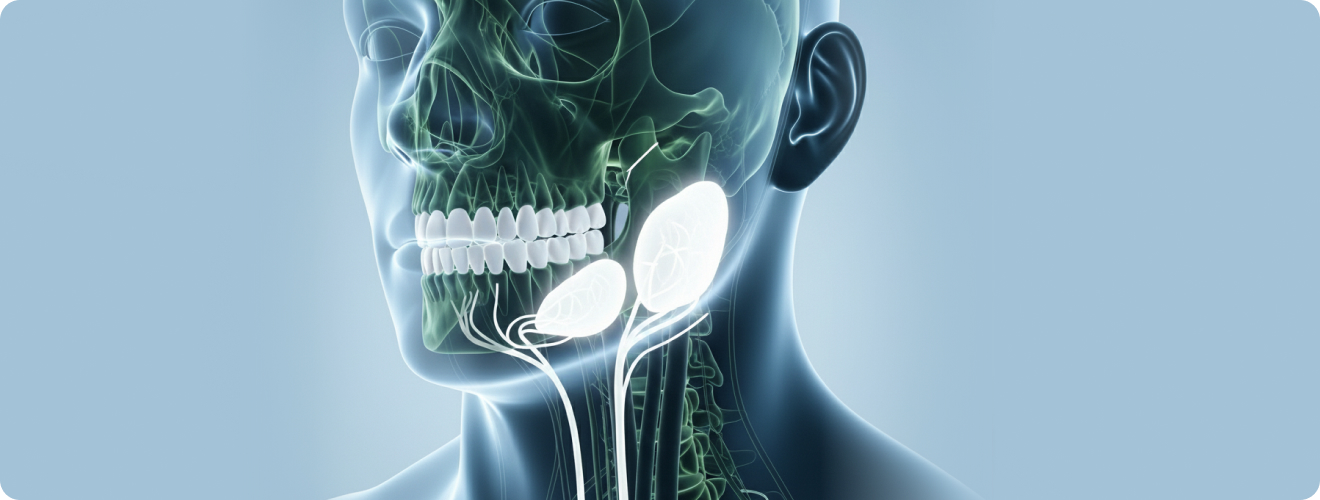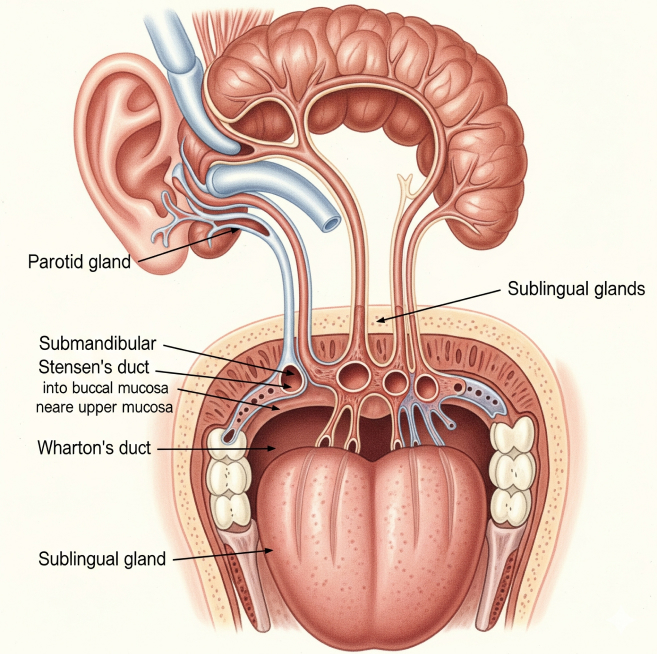


Often overlooked, the salivary glands are small but mighty organs that play an indispensable role in maintaining our overall oral health and initiating the digestive process. Far from merely producing saliva, these glands are complex structures responsible for a wide array of protective, lubricating, and enzymatic functions crucial for comfortable speech, proper swallowing, taste perception, and defence against oral pathogens. When these tiny powerhouses malfunction, the consequences can range from dry mouth and difficulty eating to more serious issues like infections and significant discomfort, often manifesting as swollen salivary glands.
This article delves into the fascinating world of exploring the intricate salivary glands anatomy, diverse types of salivary glands, the vital salivary glands’ function, and common issues that can arise, underscoring their profound importance to our well-being.

The salivary gland anatomy reveals a sophisticated network of structures strategically positioned within and around the oral cavity. While saliva is produced continuously, most of it comes from three pairs of major salivary glands:
In addition to these major glands, there are hundreds of tiny minor salivary glands scattered throughout the oral cavity – in the lips, cheeks, palate, and tongue. These contribute a small but constant amount of saliva, primarily for lubrication.
Each salivary gland is composed of groups of cells called acini, which produce the watery, enzymatic, or mucous components of saliva. These acini drain into a system of ducts that eventually empty into the mouth. The entire process is regulated by the autonomic nervous system, responding to stimuli like the sight, smell, or taste of food.
Understanding the types of salivary glands goes beyond just their location; it also relates to the type of saliva they produce:
This varied composition of saliva from different glands allows it to perform its many functions effectively.
The multifaceted salivary glands’ function is critical for numerous aspects of oral and overall health. Saliva, though mostly water, contains a complex mix of electrolytes, enzymes, proteins, and antimicrobial agents that perform several vital roles:
Without proper salivary gland function, individuals can suffer from xerostomia (dry mouth), leading to severe tooth decay, gum disease, difficulty eating and speaking, and increased susceptibility to oral infections.
A range of underlying problems, from minor infections to more serious conditions can be the reason for swelling of the salivary glands. Common causes include:
These are calcified deposits that can form in the ducts or within the glands themselves, obstructing saliva flow. This blockage leads to swelling, pain (especially during eating), and sometimes infection.
Conditions like Sjögren’s syndrome cause the immune system to attack moisture-producing glands, including salivary glands, leading to severe dry mouth and sometimes swelling.
Both benign (non-cancerous) and malignant (cancerous) growths can develop in the salivary glands, causing a painless lump or swelling.
Severe dehydration can sometimes cause temporary swelling as the glands struggle to produce enough fluid.
Some medications can cause dry mouth, which can indirectly lead to gland issues if not managed.
Any persistent or painful swelling of the salivary glands warrants a medical evaluation to determine the cause and initiate appropriate treatment.
The salivary glands, though small, are truly indispensable components of our oral and digestive systems. Their intricate salivary gland anatomy and the diverse types of salivary glands work in concert to produce saliva, a complex fluid vital for digestion, protection, lubrication, taste, and antimicrobial defence.
Understanding the myriad salivary glands’ function highlights their crucial role in maintaining oral health and preventing common issues like tooth decay and infections. While they diligently perform their tasks, problems such as swollen salivary glands can arise, signalling underlying issues ranging from blockages and infections to more serious systemic diseases. Recognising the importance of these unsung heroes of the mouth and seeking timely medical attention for any concerns is key to preserving optimal oral health and overall well-being.
Spread the love, follow us on our social media channels